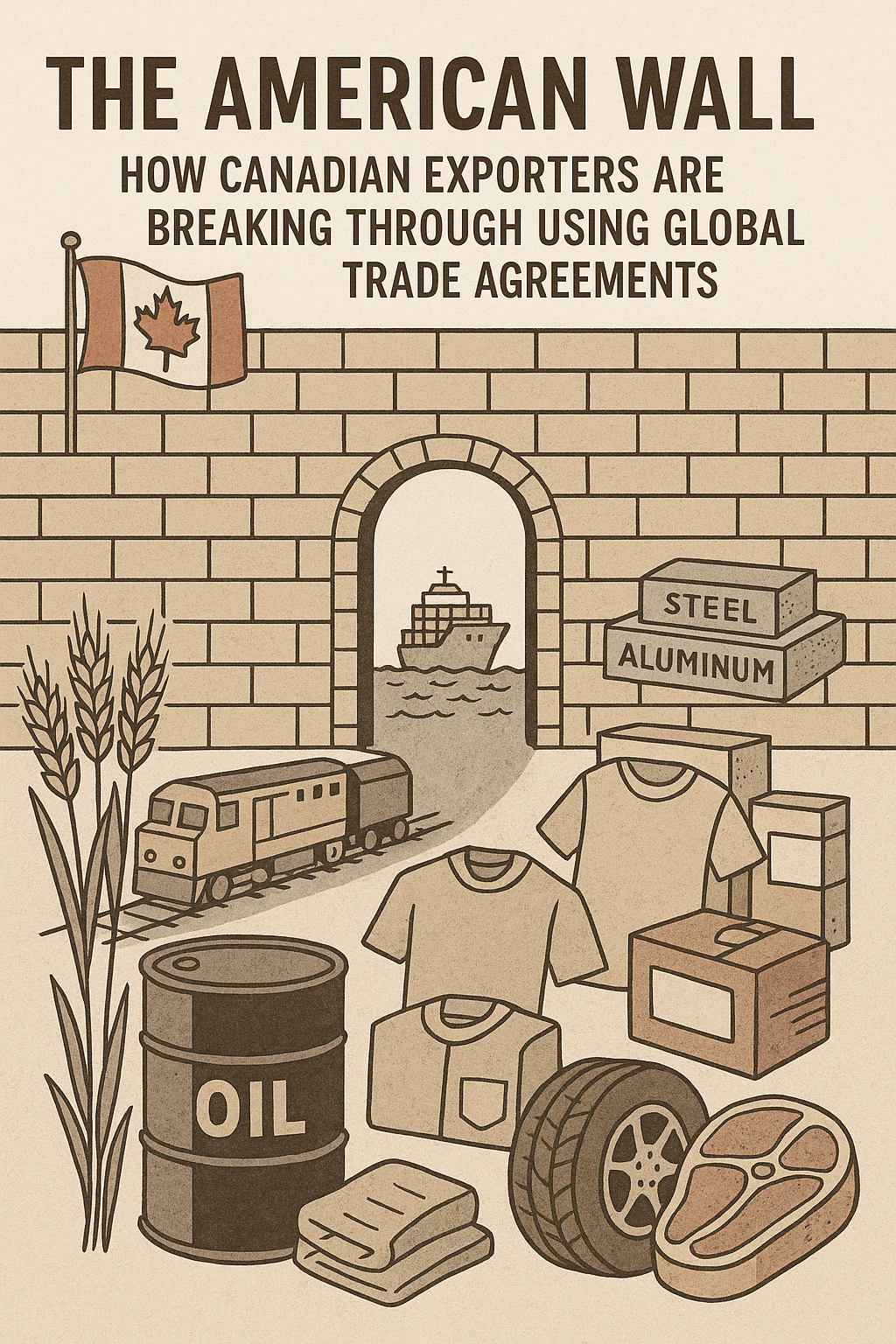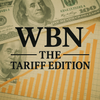
✅ ARTICLE 2: The American Wall: How Canadian Exporters Are Breaking Through Using Global Trade Agreements
By Robert Arthurs, Fractional International Trade Expert
For decades, the U.S. was the natural first stop for Canadian exporters. But today, that convenience has morphed into constraint.
With only 20 trade agreements—and friction in all of them—the U.S. market is increasingly hard to navigate. Tariffs, state-by-state restrictions, and political volatility make it risky for businesses trying to grow beyond its borders. In contrast, Canada has free trade access to 50 countries, and only one of them—ironically, the U.S.—is currently problematic.
Take, for example, a Canadian agri-food company based in Saskatchewan. Two years ago, they were exporting 80% of their product to the U.S. When new tariffs disrupted their pricing, they pivoted quickly—leveraging Canada's agreements with the European Union (CETA) and Japan (CPTPP). They rebranded their product with a sustainability message, met EU food traceability standards, and found demand from Germany to Singapore. Today, less than 30% of their sales rely on the U.S.—and their profits are stronger than ever.
This isn’t an isolated case.
Canada’s global reputation for quality, sustainability, and ethical production is increasingly attractive. Whether in agri-food, aerospace, natural health products, engineering, or clean tech—these are just a few of the dozens of booming sectors that define Canadian industry—our products are premium by design, not by accident.
Infrastructure projects are reinforcing this global readiness. The Site C Dam is powering B.C. with clean energy for generations. The Trans Mountain Pipeline now gives our oil access to Asian markets. In just weeks, Canada’s first major LNG terminal will be shipping fuel across the Pacific.
Canadian exporters are also making these global connections face-to-face. Events like the Canadian Manufacturing Technology Show (CMTS), held in Toronto, bring buyers and suppliers together from around the world. These are real opportunities to showcase Canadian excellence and build cross-border deals.
And there’s another massive opportunity on the horizon—one that blends trade, tourism, and global brand exposure. In 2026, Canada will co-host the FIFA World Cup, one of the largest international events in the world. This isn’t just about sports—this is about infrastructure, investment, and global visibility. Host cities like Toronto and Vancouver will welcome tens of thousands of visitors, businesses, and media outlets from around the world. The needs for such a large-scale event are enormous—from hospitality and construction to digital infrastructure, logistics, merchandise, and more. It’s an international showcase of a nation’s readiness, and for Canadian companies, it’s an invitation to plug directly into a global economic spotlight.
The result? A Canadian export economy that’s less dependent, more diversified, and globally respected.
Canadian exporters should stop thinking of the U.S. as “home base.” It’s time we treat it as just one of many markets—and use our strategic agreements to break through to bigger, better, more stable opportunities.
The wall is real. But we’ve already built the doors.
🔗 Canadian Trade Show Info: https://www.tradecommissioner.gc.ca/events-evenements/index.aspx?lang=eng
Robert Arthurs
Fractional International Trade Expert
Robert Arthurs International
🌐 www.robertarthurs.com
📧 rob@robertarthurs.com
📞 1 (604) 202-4641
Tags: # Tariff Impact #Canadian Exports #Global Trade #Trade Agreements #Economic Growth #Sustainable Business #FIFA 2026 Opportunities #Rob Arthurs



